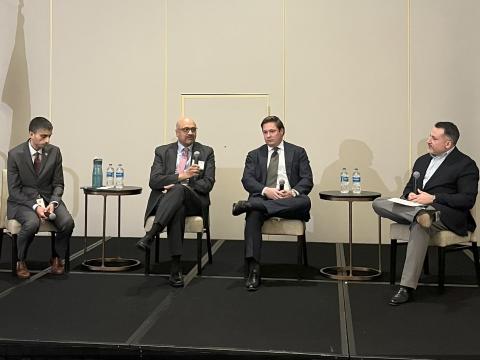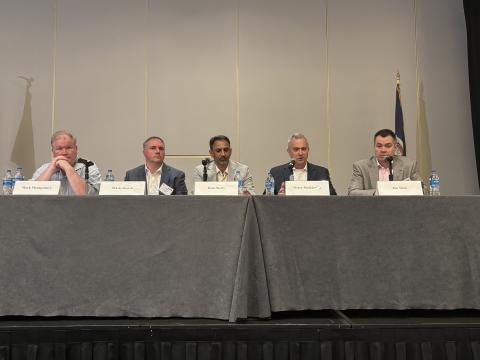Military Releases Early C2 Data Standards
U.S. military command and control (C2) systems developers are closer to enhanced interoperability after the release of C2 Core Version 1.0 in October. The core is an open, Extensible Markup Language (XML)-based data exchange standard developed by the C2 community for capability implementation. These data standards change the current approach to military-systems design that results in unique interfaces, often with multiple standards for similar data, for each information exchange.
C2 Core offers system experts a set of online developer support tools that automate many manual processes associated with developing data exchanges in XML. "These reusable components were designed collaboratively to facilitate and reduce the costs associated with developing data exchanges between unique and disparate C2 systems," explains Leslie Winters, chief, Joint Data and Services Division, U.S. Joint Forces Command (JFCOM). The command and the Office of the Assistant Secretary of Defense for Networks and Information Integration sponsor the initiative. The system provides a unique, standard method to define and represent oft-shared C2 data, simplifying the process of sharing and integrating information from disparate systems. It also reduces interface development time, allowing developers to respond quicker to dynamic warfighter information-sharing requirements.
Version 1.0 contains three primary pieces: data model and vocabulary, reusable components and standard architectural framework. The system includes a vocabulary of more than 700 common C2 terms and definitions, serving as a dictionary. "Leveraging this vocabulary lessens mediation required to build a new data exchange," Winters says. "The C2 Core reusable components are the individual words—terms and definitions—within the dictionary. The standard architectural framework is a set of rules on how you build an information exchange specification." System developers will use C2 Core to facilitate information sharing among capabilities or among capabilities and the various authoritative data sources that feed them.
For operational warfighters, the system will be transparent. However, they should notice the decreased time for developing new interfaces in response to new information-sharing requirements as well as greater abilities to discover and use disparate information sources; to compare, analyze and integrate data; and to enhance interoperability with joint, interagency and coalition partners as the system becomes more prevalent.
Several pilot assessments are complete with more underway or planned for 2011. They involve various C2 Core stakeholders from individual military services and other defense groups. According to Winters, the intent is to evaluate and mature the C2 Core, culminating in a C2 Core Version 2.0 release next September; it is anticipated that it will be approved for use by December 2011, if it meets the established acceptance criteria.
"There are also potential pilot nominations from the Defense Information Systems Agency and Joint Forces Command J-7, representing the modeling and simulation community," Winters says. The assessments will provide feedback to the C2 Core development team and the C2 Core Configuration Control Board. "Pilot results will shape the C2 Core as it evolves to Version 2.0," Winters explains. Developers plan to evaluate the system continuously and to update it periodically in response to various factors.
Though C2 Core is intended for the U.S. military, allies have expressed interest in it and NATO is creating a new data approach that includes a NATO C2 Core. U.S. personnel will participate in developing that to maximize interoperability with coalition partners.
C2 Core also should help the military share information with civilian partners such as those in intelligence or law enforcement. "In these cases, having a common standard like the C2 Core on the military side makes it easier for nonmilitary organizations to understand and process information," Winters says.




Comments